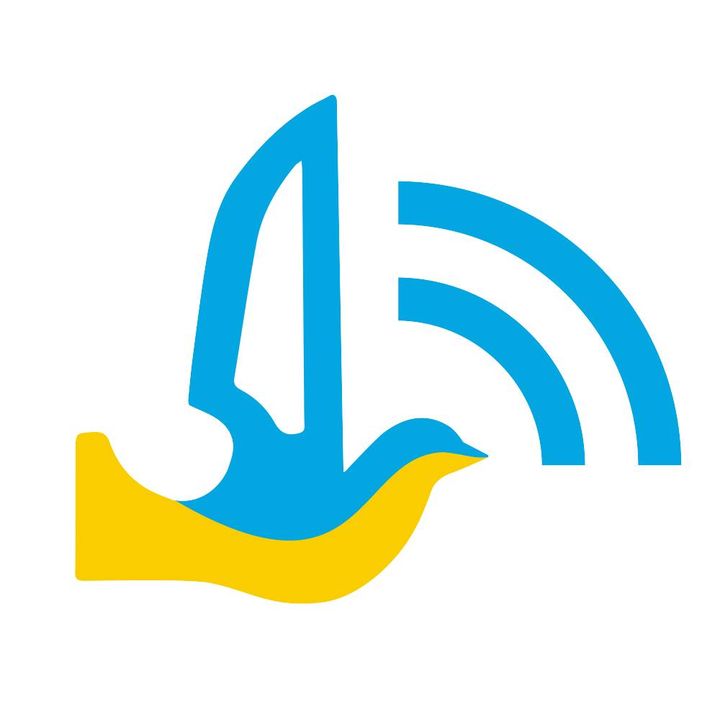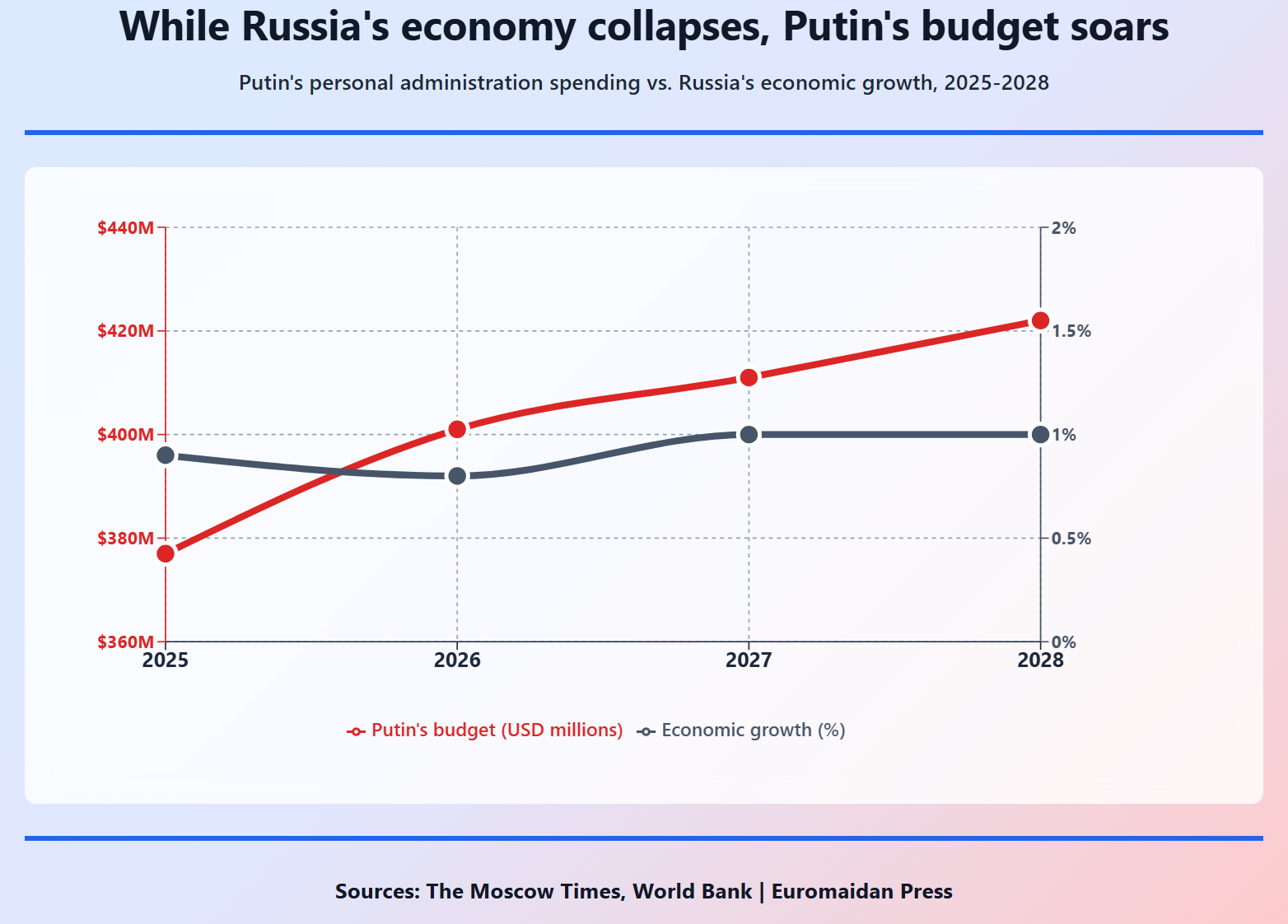Vladimir Putin will spend more on his personal office in 2026 than entire Russian regions spend on everything—schools, hospitals, roads combined. The budget: 32.9 billion rubles ($401 million), or $1.1 million every single day.
This comes as Moscow prepares to crush small businesses with new taxes to cover a $45 billion budget deficit. The message is clear: the regime eats first.
Why regime budgets reveal authoritarian priorities
Budget documents show where power flows in authoritarian systems.
While the economy enters stagnation, Putin’s administration costs keep climbing: $411 million in 2027 and $422 million by 2028.
The math breaks down to 2.74 billion rubles ($33.4 million) monthly, 633 million rubles ($7.7 million) weekly, 90 million rubles ($1.1 million) daily, The Moscow Times reported.
That daily spending exceeds what the Jewish Autonomous Oblast’s 24.2 billion rubles ($295 million) gets for an entire year, or Kalmykia’s 28.8 billion annual budget.
Three-quarters of the 2026 increase—1.5 billion rubles ($18.3 million)—funds salary raises for Presidential Administration employees. The remaining 500 million rubles ($6.1 million) covers “purchases of goods, works and services” for the Kremlin’s growing needs.
The entire state apparatus fattens up
Parliament isn’t missing out. The State Duma gets an extra 2.3 billion rubles ($28 million) in 2026, bringing total costs to 17.6 billion rubles ($214.5 million). More than half—1.3 billion rubles ($15.8 million)—goes to parliamentary salaries, totaling 11.3 billion rubles ($137.7 million) annually.
The Federation Council receives 373 million rubles ($4.5 million) more, reaching 8.6 billion rubles ($104.8 million). Prime Minister Mikhail Mishustin’s government apparatus costs nearly 1 billion rubles ($12.2 million) more, climbing to 13 billion rubles ($158.4 million) in 2026.
Small businesses will pay for it
To cover the 3.7 trillion ruble ($45.1 billion) deficit, Moscow will raise VAT from 20% to 22% and slash the VAT threshold from 60 million rubles ($731,000) to just 10 million rubles ($121,850) in annual revenue. This forces approximately 450,000 small businesses and self-employed individuals into the tax system.
“A business with 10, 20, or even 50 million rubles in revenue will simply become impossible to administer,”
Yegor Diashov, head of Moscow-based investment firm Dialot, said, predicting mass consolidation as smaller companies merge or get absorbed by larger players.
Economic stagnation arrives
The World Bank downgraded Russia’s forecast from 1.4% to 0.9% growth for 2025, from 1.2% to 0.8% for 2026, and from 1.2% to 1% for 2027.
This isn’t “managed cooling,” it’s entry into zastoy, the Soviet-era term for stagnation.
Investments will contract 0.4% in 2025 and another 0.2% in 2026, with the budget deficit remaining around 2.7-2.9% of GDP through 2027 despite the new taxes. The regime is squeezing harder while the economy shrinks.
What this reveals about authoritarian governance
Democracies debate leader salaries publicly, presidential budgets face legislative scrutiny, and opposition parties question spending priorities. None of this exists in Russia.
Instead, regime maintenance comes first: presidential palaces, parliamentary perks, government apparatus expansion—all while the economy gets strangled with taxes and stagnation becomes official policy.
The pattern repeats across authoritarian systems: Venezuela, Zimbabwe, and Soviet-era Russia.
Putin’s $401 million personal budget isn’t just excessive spending. It’s a demonstration of power—proof that the regime answers to no one, that economic reality doesn’t constrain the leader, that small business owners will sacrifice while Kremlin staff get raises.




